Slings are baby carriers designed to help you carry a baby by easing the pressure on your arms and back. Find out the pros and cons of baby wearing.
What is a baby sling?
Slings are baby carriers designed to help you carry a baby by easing the pressure on your arms and back. While there are many different kinds of baby carriers on the market, what differentiates slings from other baby carriers is that slings do not have identified leg openings [1].
Carrying your baby in a baby sling is called baby-wearing, which has been practiced for centuries around the world. In the industrialised world, baby-wearing has gained popularity in recent decades, partly due to the influence of advocates of attachment parenting [2].
Below are three common varieties of baby sling:
The ring sling: This type of sling can be used from birth right through to toddlerhood – provided the baby is not premature or low birth weight. Dynamic tension is applied by using a length of cloth, with one end of the cloth is sewn to two rings [3].
The cloth wraps around the wearer’s body from shoulder to opposite hip and back up to the shoulder, and the end is threaded through the rings to create a buckle effect. Ring slings allow the wearer to carry the baby on the front, hip and on the back, but it is strongly recommend to always carry the baby in an upright position so baby can breathe easily and you can monitor her wellbeing at all times [4].
Wraps: This type of baby carrier is both simple and versatile. It requires just one long piece of fabric, between two metres and six metres in length. Be sure to choose a good quality fabric with a weave that isn’t too dense – if you hold it up to the light, some light should pass through, but not so much that it is too flimsy. Natural fibres like cotton, linen and hemp are best because of their breathability. You can make your own wrap from a suitable fabric, or scarves, sheets, blankets, etc, but there are also specific products available [5].
Wraps can be used in an array of different ways, which makes them easily customisable and adjustable for comfort and support. Check out this video for ideas on how to use different wraps. [6].
Pouches: These slings are generally formed by a wide piece of fabric sewn into a tubular shape and generally don’t have rings or straps, although some do. The wearer slips the pouch over the head and one shoulder, sash-style, creating a pocket or seat to hold the baby in. Many paediatricians and baby-wearing experts do not recommend pouch slings because babies can suffocate when held incorrectly [7].
Consumer Affairs NZ warns against using bag slings or slings that allow the baby’s spine to curve.
Baby slings throughout history
Baby carriers have been around for thousands of years. Prior to the early 1900s, parents worldwide used a variety of long cloths, shawls, scarves and even bedsheets to snuggle up their babies and get the chores done. Baby-wearing wasn’t something “special” or different, as it is perceived today in the Western world; it was a necessity. Mum had to work incredibly hard and didn’t have time to stop and entertain baby, so baby just came along for the ride. Even today, many traditional types of carrier are still used in developing countries, although this is usually restricted to indigenous communities where baby-wearing is totally normal, a necessity and way of life [8].
In his book, The Artificial Ape, British pre-historian Timothy Taylor, from Bradford University, claims that increased brain size was made possible by the invention of the baby sling. He says the baby sling was a development that enabled slower growing, physically and mentally immature offspring to survive and flourish. In other words, he determines that the task of building a large brain retards physical growth [9].
Before the invention of the baby sling, dated by Dr Taylor to at least 2.2 million years ago, when human ancestor head size suddenly began to increase, physically mature infants were more likely to survive because caring for slower-developing, immature babies was difficult, uneconomic and often dangerous. Mothers holding their infants were more vulnerable to attack from predators or other humans than those using baby slings [10].
The pros and cons of carrying baby in a sling
The pros for wearing a sling [11]:
1. Access
With a baby sling, there’s no need to use the elevator or ramp. And hiking trails, crowded shops, and public transport are all easy to navigate.
2. Expense
Prams aren’t cheap – even a second-hand one may be more expensive than the cost of one of the pricier slings.
3. Space
Prams take up a heap of room in the back of the car and in the home. A sling, on the other hand, will fit into a small bag and you can easily carry it until you need it.
4. Skin-to-skin contact
In a sling, a baby is next to your chest all the time, snuggled in and secure. This promotes bonding and breastfeeding. Most babies will fall asleep easily in a sling with the motion of walking or rocking.
5. Communication
Being so close to you in a sling, babies can advance developmentally; by watching you they learn language and non-verbal cues.
6. Hands-free
Everyday tasks, such as housework, are easy to do with your baby in a sling. As you go about your chores, baby happily snuggles into you, either sleeping or watching her surroundings.
7. Fitness
Carrying a baby long distances is a great workout. Carrying any extra weight while walking adds to the benefit of a workout.
The cons (and there are some) for wearing a baby sling [12]:
1. Difficulty
Some slings, especially the woven wraps, can be a little tricky to master. But practice makes perfect and these days there are dozens of videos on the internet demonstrating the various carries.
2. Choice
There are so many sling options out there that it can be daunting for a beginner. Finding one that suits you will depend on recommendations from other mums and just trying each variety out to see how it fits.
3. Bags
Slings are not so great if you have a lot of heavy shopping to carry, and it’s here where a pram would be more useful. The extra weight of shopping bags pulling on your shoulders when you are wearing your baby can put strain on your neck.
4. Weather
In hot weather, carrying your baby can be hard work. But using a light-weight sling and dressing your baby minimally helps. In rain you can just use a large umbrella to cover you both.
5. Multiples
A sling is great if you have one baby, but what about multiple babies? There are actually slings available for carrying twins, and you can tie certain wraps so they will hold twins.
6. Containment
A drawback of using a sling over a pram is there is nowhere to securely put your baby down if you need a break for a while (though it is possible to sit down whilst wearing a sling).
7. Safety
Carrying your baby on your body is always going to be more risky than carrying them in a pram. You could fall, slip, or simply catch their leg or head on something. Keep your hands free if possible to catch yourself if you do fall. And if you feel dizzy or tired, don’t use the sling until you are more steady.
Controversy surrounding baby slings
Parents and carers should take care when using slings and pouches to carry babies. Babies have suffocated while using slings. They are at risk if placed incorrectly in a sling because they do not have the physical capacity to move out of dangerous positions that block their airways. Babies who are under four months old, premature, low birth weight or having breathing difficulties appear to be at greatest risk. Two positions in particular present significant danger [13]:
- Lying with a curved back, with the chin resting on the chest.
- Lying with the face pressed against the fabric of the sling or the wearer’s body.
Dr Kirsten Vallmuur, from QUT’s Centre for Accident Research & Road Safety – Queensland (CARRS-Q), says that since 2010 there have been three deaths in Australia as a result of suffocation in a baby sling, and at least 14 deaths in the USA over the past two decades. Dr Vallmurr headed significant research on the dangers of baby slings, published this year, and she and her team and the Office of Fair Trading surveyed almost 800 parents across Australia to better understand parents’ views of the risks and benefits of baby slings and how they use them [14].
The study found that there were almost one in 20 infant injuries or narrow misses. It also revealed that of the 95 percent of parents surveyed who said they used or intended to use a baby sling, the majority considered it safe to use the sling from when the baby is a newborn. This is concerning because product safety experts don’t recommend baby slings for premature or low birth weight babies [15].
The research determined that the most common non-fatal injuries involved the baby slipping out of the sling and falling, the parent falling, and the baby being injured while being positioned or removed from the carrier [16].
Baby sling safety guidelines
Here are some simple steps for parents to keep their children safe in slings [17]:
- Keep the child’s face, especially nose and mouth, uncovered at all times;
- Avoid the child being curled into the ‘C’ position where the child’s chin touches the chest and blocks the airways;
- Show caution and seek medical advice for using baby sling carriers for premature, low weight or sick infants;
- Consumer Affairs NZ recommends holding your baby in an upright position if they are showing signs of illness;
- Regularly check the child to ensure she has not slipped into the pouch (if the sling is a pouch type), covering her nose and mouth;
- Reposition the child after breastfeeding to keep the nose and mouth clear; and
- Acknowledge that some slings may be a safer option than others, such as those that carry the child in the vertical position.
Choose the right sling for your baby by[18]:
- Take your baby with you when buying a sling;
- Ask for a demonstration; and
- Never using products with the descriptions “womb-like” or a “cocoon”.
Wear your sling correctly by:
- following instructions for safe use;
- having someone assist you the first time;
- lying your baby in a flat position with a straight back to ensure the baby’s chin does not rest on his or her chest; and
- ensuring you can see your baby’s face at all times and the face remains uncovered by the sling on your body.
Use your sling safely by:
- holding your baby with at least one arm;
- regularly checking your baby for any signs of discomfort;
- being alert to your own safety, as slings can affect the way you move; and
- being alert for things that may fall on your baby (e.g. hot drinks).
Do your research when it comes to choosing the safest possible baby sling. A correct fit is vital, not just for baby but also for parents, so both of you are comfortable, safe and secure. That means both parents need to try the sling on, too. In a 2012 CHOICE Australia survey involving 1006 parents, 23 percent of dads reported noticeable discomfort, the baby almost falling out or even injury to the baby when wearing a carrier or sling. So, if Dad is going to wear the carrier or sling, it needs to be adjustable in order to fit both parents [19].
In addition, The Office of Fair Trading cautions that many of the babies who have died in slings were either born prematurely, of low birth weight or had breathing issues such as a cold. It is important for parents of these babies to talk to their doctor as to the suitability of these products before using them [20].
Babes in Arms, a distribution company specialising in baby slings and carriers across Australia and New Zealand, suggests parents use the acronym CARRY to keep their baby safe while wearing them. The letters stand for [21]:
Careful – don’t do anything while baby wearing that you wouldn’t do while pregnant.
Airway – ensure you can see your baby’s face without moving the fabric and make sure the chin is not against the chest, which may restrict breathing.
Ride high – make sure your baby is high and tight against your chest.
Right fit – not all carriers are the same. Ensure you read the instructions that come with the carrier (better yet, watch the videos that many brands make available). The carrier or sling you use should be suitable for your baby’s age and weight, as well as suitable for your body shape.
Your instinct – trust your instincts. As a parent, you know your baby best, but keep the connection strong by ensuring you can always see your baby’s face. You should be able to make eye contact at all times and you should try to ensure that, when your baby is in the sling, he is in a position that mimics how you would normally carry him.
The T.I.C.K.S approach
T.I.C.K.S. is an acronym created by a UK consortium of sling manufacturers and retailers[22]. It stands for:
Tight
Make sure the sling is tight, with your baby in a high and upright position, with good head support.
In view at all times
You should be able to see your baby’s face simply by looking down. Ensure your baby’s face, nose and mouth remain uncovered by both the sling and your body.
Close enough to kiss
Following on from the recommendation to keep your baby positioned high, this section of the recommendations suggests that you should easily be able to kiss the top of your baby’s head just by tipping your head forward.
Keep chin off the chest
Keep your baby’s chin away from their body, and never curled/forced onto his chest, as it can restrict breathing. You should also regularly check on your baby, because they can become distressed without making any noise or movement.
Supported back
A sling should support baby’s back, with his tummy and chest against you. When bending down, do so from the knees, and use one hand to support your baby’s back while you do.
Written by Kidspot Australia

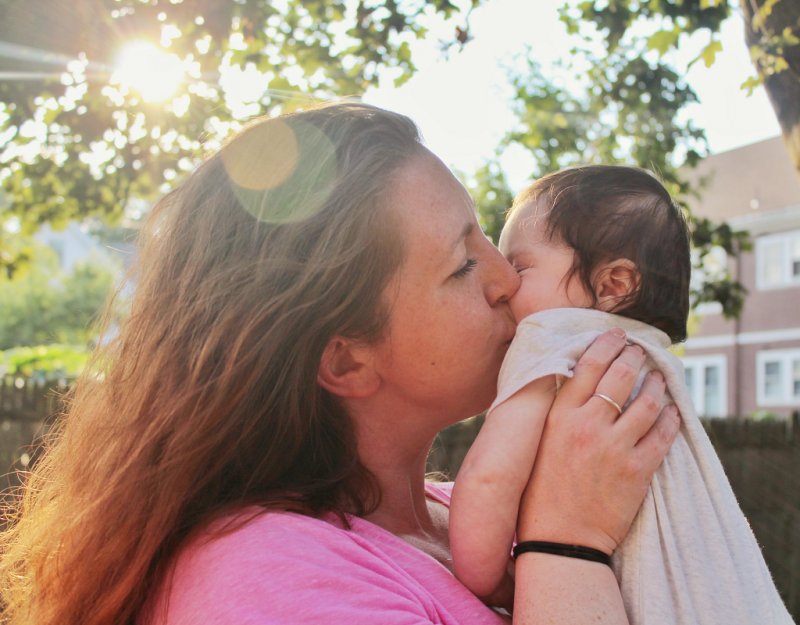


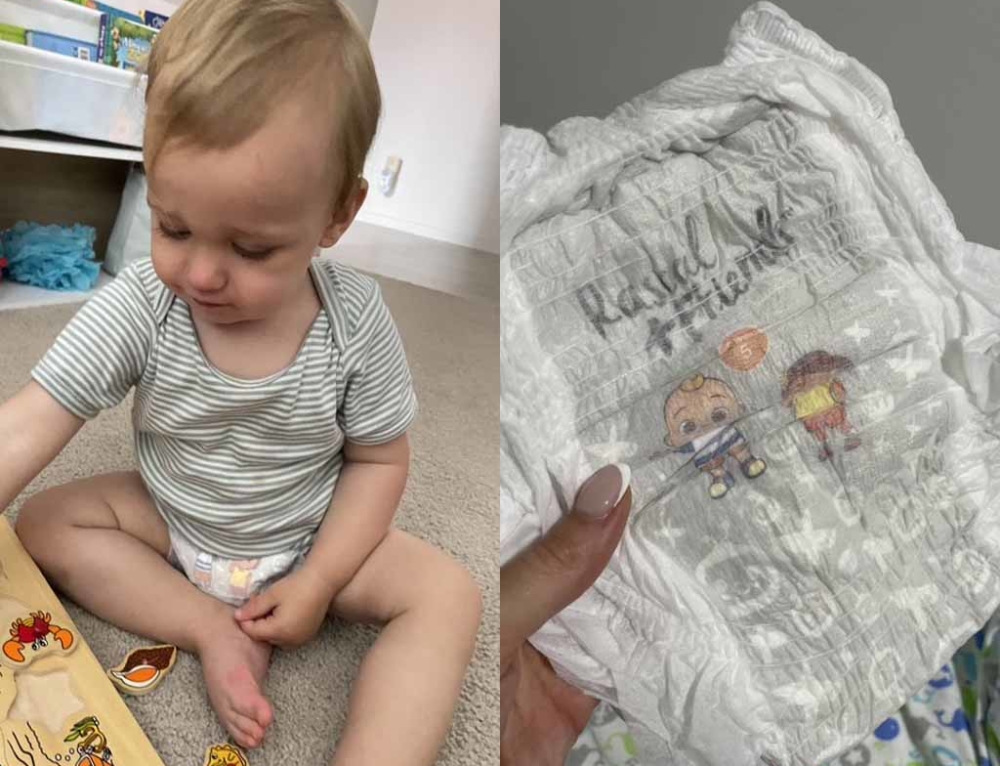
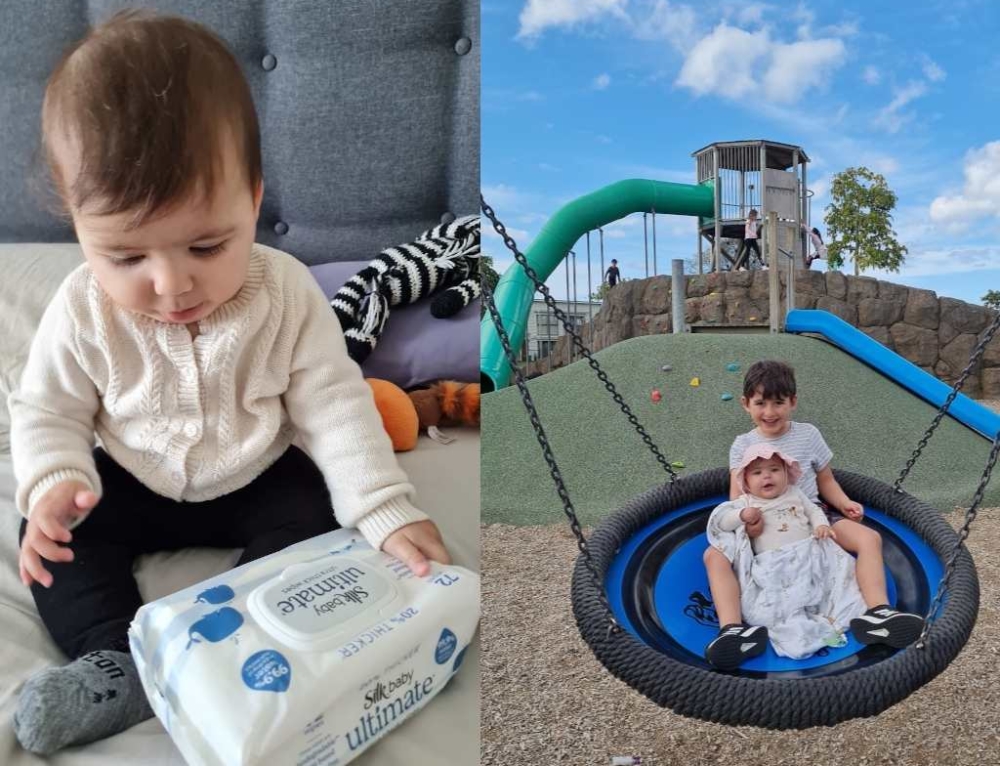
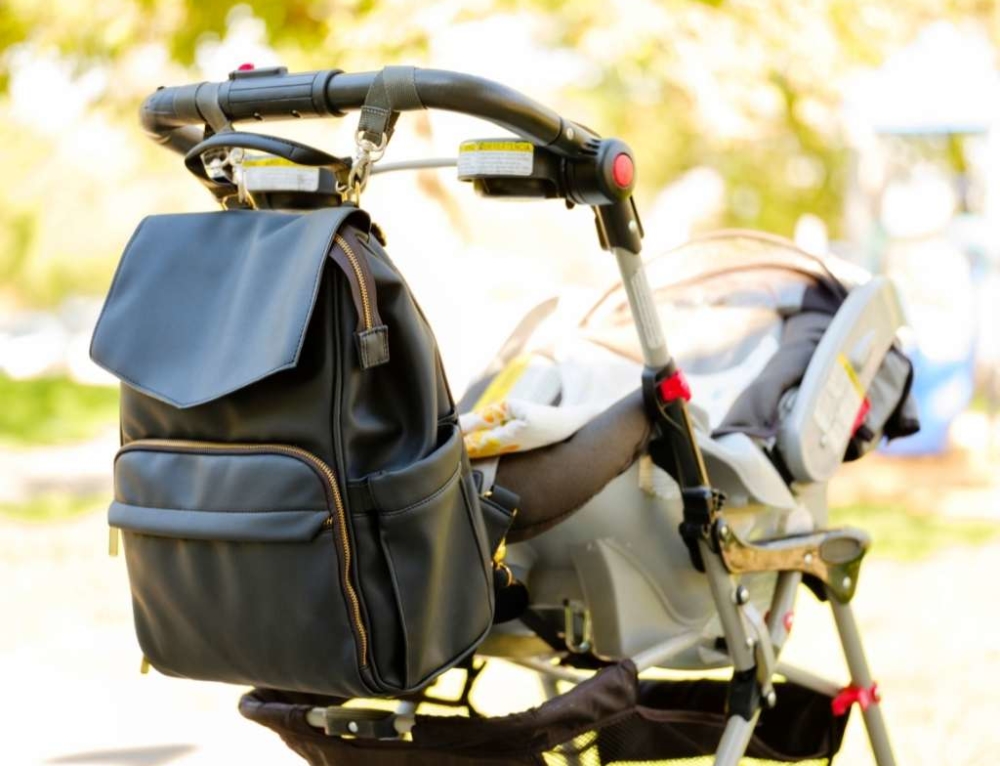
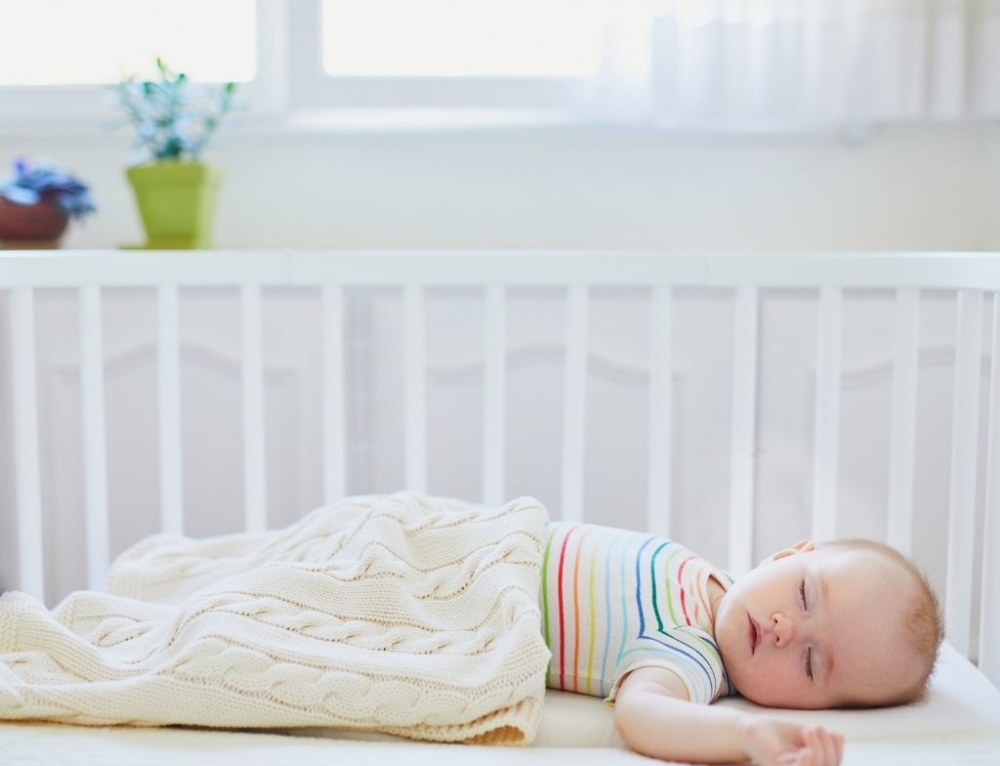
This is a really comprehensive article! I wish it had been around when I was first looking at slings, pre-baby. I would have waited to make the purchase until she arrived. We do attachment parenting and planned to from the start. I got a ring sling for her, but actually she didn’t enjoy it. She needed to be able to see me properly and I never got the hang of setting the sling so she could. She ended up in a front pack which worked for us. My second baby loved the sling though and slept in it a lot which made school drop offs a lot easier. I do wonder if it was partly because of my confidence in using it the second time around as well!